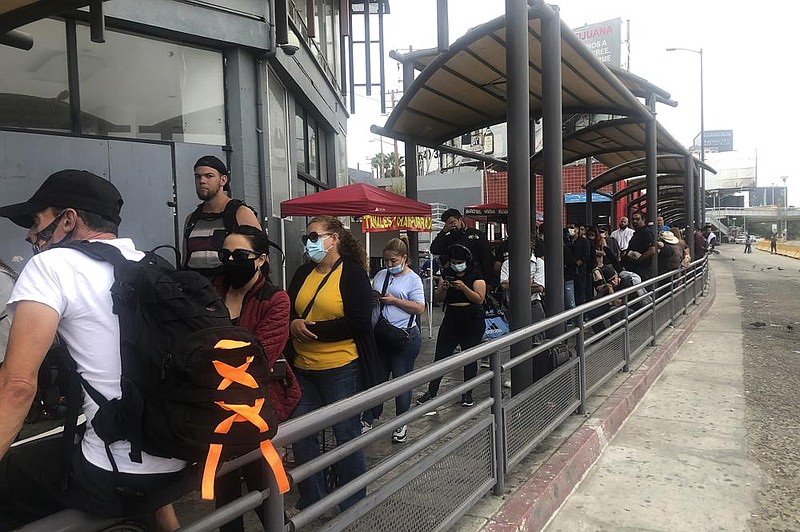SAN DIEGO — A crackdown on nonessential travel from Mexico during the coronavirus pandemic has created bottlenecks at the border, with drivers reporting waits of up to 10 hours to get into the United States.
An employee at a company that provides support for businesses with Mexican operations saw the huge lines Sunday night from his home in Tijuana. A U.S. citizen, he lined up at midnight for his 8 a.m. shift Monday in San Diego and still arrived 90 minutes late.
“I hope that it’s just startup fits and starts and that it will be a little more streamlined down the road,” said Ross Baldwin, the man’s boss and president of Tacna Services Inc.
U.S. citizens and legal residents cannot be denied entry under a partial ban that the Trump administration introduced in March to prevent the spread of the coronavirus. Going to work, school and medical appointments are deemed essential travel but going to shop, dine or socialize is not.
[CORONAVIRUS: Click here for our complete coverage » arkansasonline.com/coronavirus]
Andrea Casillas, who works at a Bed Bath & Beyond store in San Diego and lives in Tijuana because it’s less expensive, waited for four hours Monday.
“There is a price to pay [for commuting from Mexico], but it should be reasonable,” Casillas said. “This is going too far.”
The crackdown comes after the Customs and Border Protection agency said it surveyed about 100,000 travelers coming from Mexico by car or on foot and found 63% of U.S. citizens and legal residents traveled for reasons that were not essential.
The agency on Friday began redirecting staff members at 14 larger crossings in California, Arizona and Texas to get people through quickly on weekday mornings, when essential travel is heaviest, leading to big backups on the weekends.
On Tuesday, traffic was unusually light, with pedestrians wearing masks and keeping a short distance from one another. Weekend and weeknight delays are expected to grow, affecting people going to the beach or restaurants. Waits soared across the border last weekend, with California crossings hit hardest.
The measures don’t apply on the Canadian border, which is also subject to the nonessential travel ban. Air travel isn’t affected.
Lines that snaked through Tijuana streets last weekend were the longest that many residents had seen, posing challenges for drivers desperate for a bathroom break.
Tijuana police said some people ran out of a gas in line. An 87-year-old woman died of a heart attack in her car as she waited Sunday to get through the nation’s busiest border crossing, in San Diego.
Angry people stuck in traffic lit up social media, posting photos and videos taken from their cars. One of them, Yadir Melendrez, said he waited five hours to cross for work Monday.
“The crossing is being slowed down to exasperate people on vacations or non-essential trips!” he wrote in a text message. “The bad thing is that those of us who go to work get hurt!”
Before the pandemic, about 200,000 people a day entered the U.S. at California crossings with Mexico, according to the Customs and Border Patrol agency . The daily average plunged to about 70,000 people after the ban was announced in March but has since climbed to about 120,000.
The agency is emphasizing public-health considerations.
“We need people to think twice about nonessential travel and to ask themselves if the travel is worth risking their lives and the lives of others,” spokesman Rusty Payne said.
Christopher Landau, U.S. ambassador to Mexico, said many people are crossing the border to visit family members, shop or dine out.
“Such irresponsible behavior is exacerbating the health crisis,” he wrote on Twitter.
